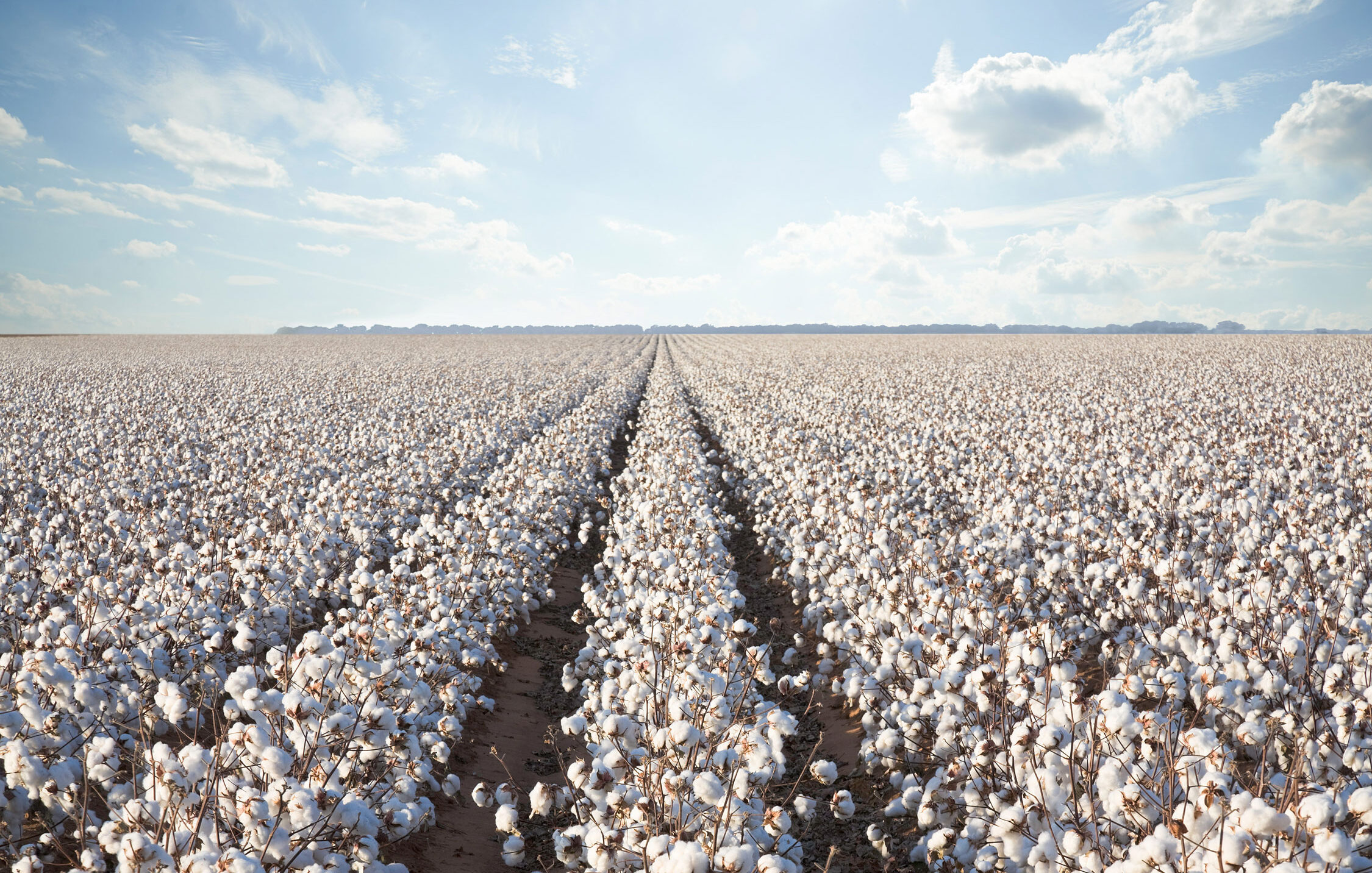Why Is Sustainable Fashion Important?
From start to finish and everywhere in between, there’s room for improvement when it comes to the lifecycle of clothing. One prime place to make a difference? Reducing the 60% share of synthetics in clothing materials.
Synthetic textiles, such as polyester and nylon, are made from non-renewable fossil fuels. They shed microplastics, which pollute aquarian ecosystems and enter the food chain.1, 2 As more apparel is being produced — much of it with synthetic fibers — and garments are only being worn seven to 10 times — a 36% drop in 15 years — it’s more important than ever that we consider the entire life cycle of apparel and the impact of the materials we choose.
And this is where natural fibers, like cotton, come in.

Cotton: A Sustainable Fashion Textile
Throughout its life, no matter how long or short, there are sustainable attributes associated with cotton. Cotton is a renewable fiber, grown from plants, not made from fossil fuels. Cotton, as a natural fiber, does not shed microplastics throughout use and is biodegradable and can go back to earth and mimic a natural, circular cycle.
From Soil to Fabric: Cotton’s Renewable Journey
Cotton fiber comes from the cotton plant, the result of seed, soil, sun and water. As the cotton plant grows, it sequesters carbon, nurtures the soil and creates a soft boll from which cotton thread is born. Then, next season, it can all be done again.
Even beyond this natural cycle, the sustainability record of the industry keeps improving. According to U.S. cotton farmer Jimmy Webb, “Technology has made us better stewards of the land.” These technologies improve water use efficiency and provide soil health analytics, helping cotton farmers listen to the land and the plants, enrich the soil and surrounding environments, use less resources, and provide a renewable source of fibers for the textile industry.


This beginning of life journey, from seed to plant to fabric, is a natural one, and through responsible practices like water management and healthy soil techniques, the U.S. cotton industry is striving to sustainably grow and harvest cotton for sustainable fashion textiles.
But it isn’t just the beginning of life that matters.
Microfibers and Sustainable Fashion
All fabrics shed microfibers throughout their use, wear and washing. What’s important, however, is what happens to these microfibers once they break free from clothing. Cotton fibers break down in wastewater and other environments sometimes more thoroughly than an oak leaf!3 Synthetic fibers, however, break down into smaller and smaller pieces, known as microplastics, and do not biodegrade.4 Instead, they make their way into aquatic and terrestrial ecosystems and end up in our drinking water, food system, and eventually, humans, harming our health and disrupting our biological systems.5

Synthetic textiles are not the only contributor of microplastics, but every synthetic textile contributes to environmental microplastics. Natural fibers, like those made with cotton, are alternatives that, if used to replace a portion of synthetic fibers, could help reduce microplastics in our oceans, land and bodies.
Cotton has also been shown to be compostable in commercial facilities, whereas synthetic fibers, like polyester, do not break down.6 Cotton is integral to circular fashion design, where manufacturers and brands aim to create textiles that feel good and won’t harm the planet with microplastics and hundreds of years of pollution.
Sustainable Fashion Textiles and Collections
If you’re considering sustainable textiles to reduce your environmental impact, cotton is a versatile and dependable choice. Our collaborator Stateless offers examples of fashion collections that blend sustainability and style, considering function, aesthetics, and social and environmental impacts.

Refined collections by Stateless utilize the CottonWorks™ FABRICAST library and augment sustainably grown cotton with inspired design. From bioderived or recycled dye (RECYCROM™ by Officina+39) and waste-reducing construction, the new Sustainable Living Collection has sustainability at the forefront. The zero-waste flat knit cardigan features dyes derived from natural indigo, sourced from Botanical Colors. A women’s 100% cotton jumpsuit is a demonstration of circularity, recycling textile waste into pigment dye. The collection utilizes natural fibers like wool and cotton and builds longevity into garments through TOUGH COTTON™ technology, creating durable, high quality, abrasion resistant apparel.
With 100% cotton garment options and unique, sustainable approaches to textile methods, Stateless Collection Function Meets Fashion elevates functional apparel to statements with style, without sacrificing sustainability.
Sustainable fashion should be stylish, comfortable, durable, and versatile. Learn more about Stateless or see your designs come to life when you explore them as digital fabrics in our FABRICAST™ library.
1 https://www.nature.com/articles/494169a
2 Microplastics (nationalgeographic.org)
4 https://adventurescientists.org/wp-content/uploads/2021/12/2018_microplastics-report_final-2.pdf